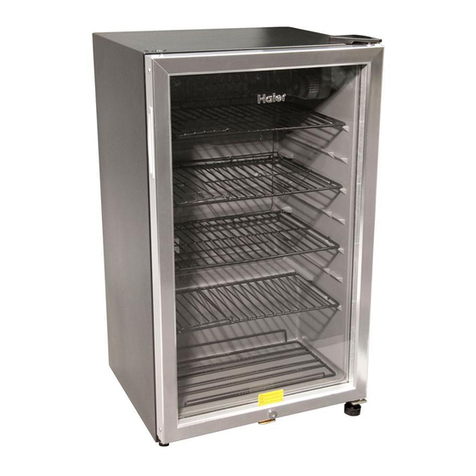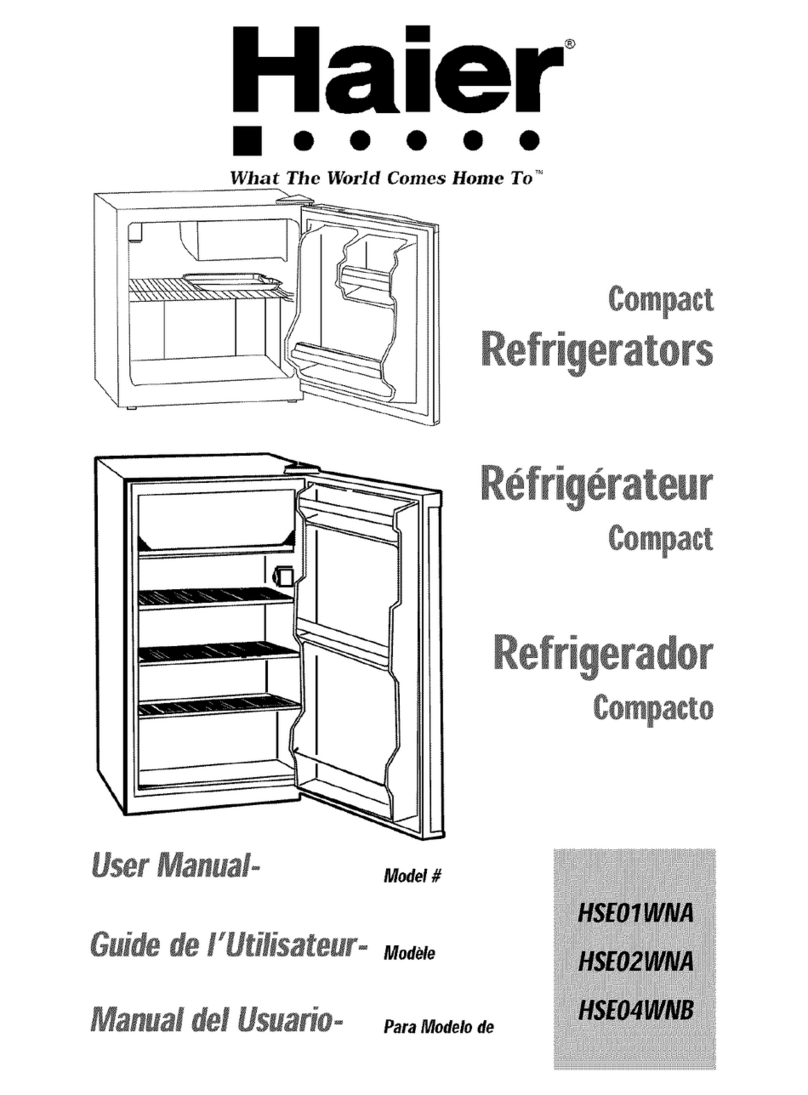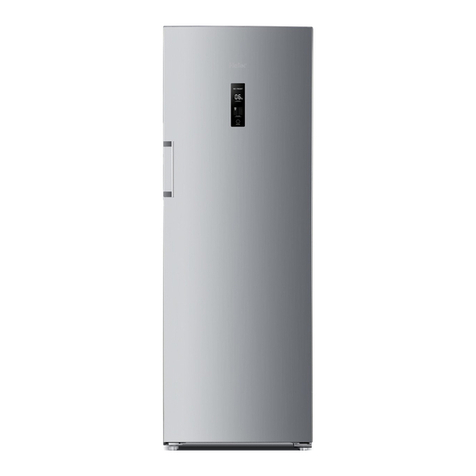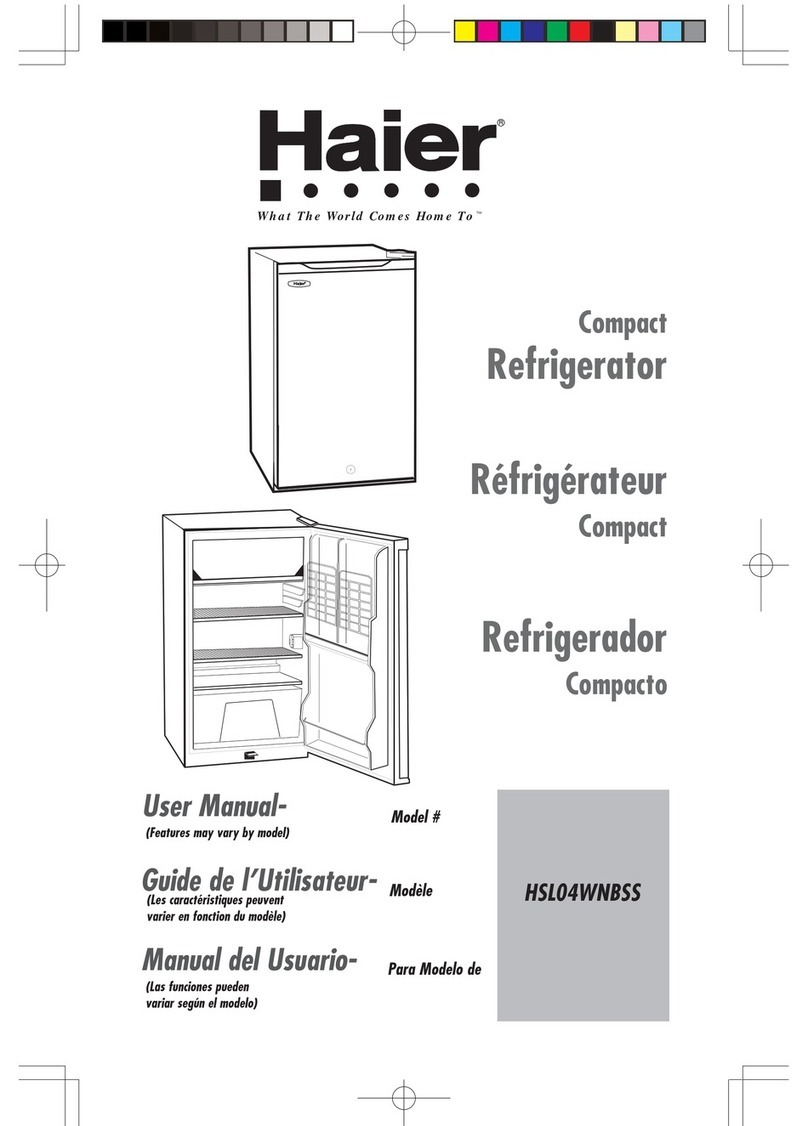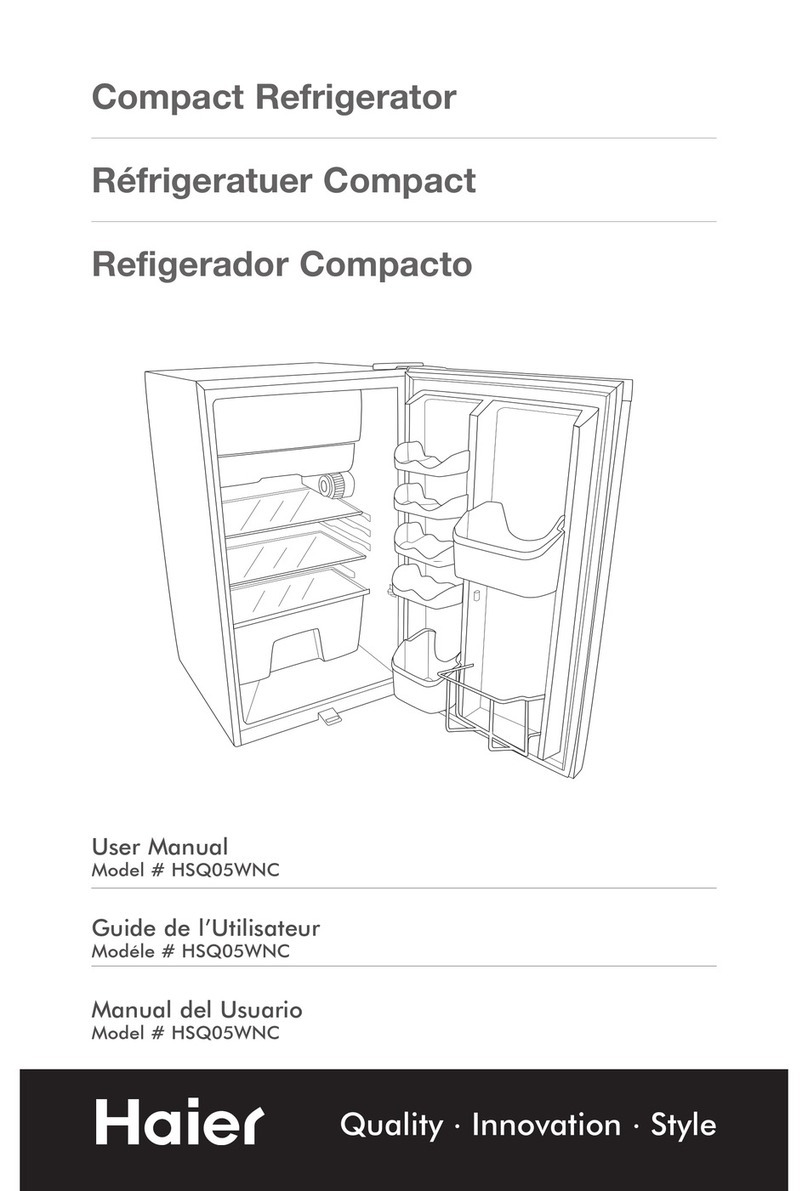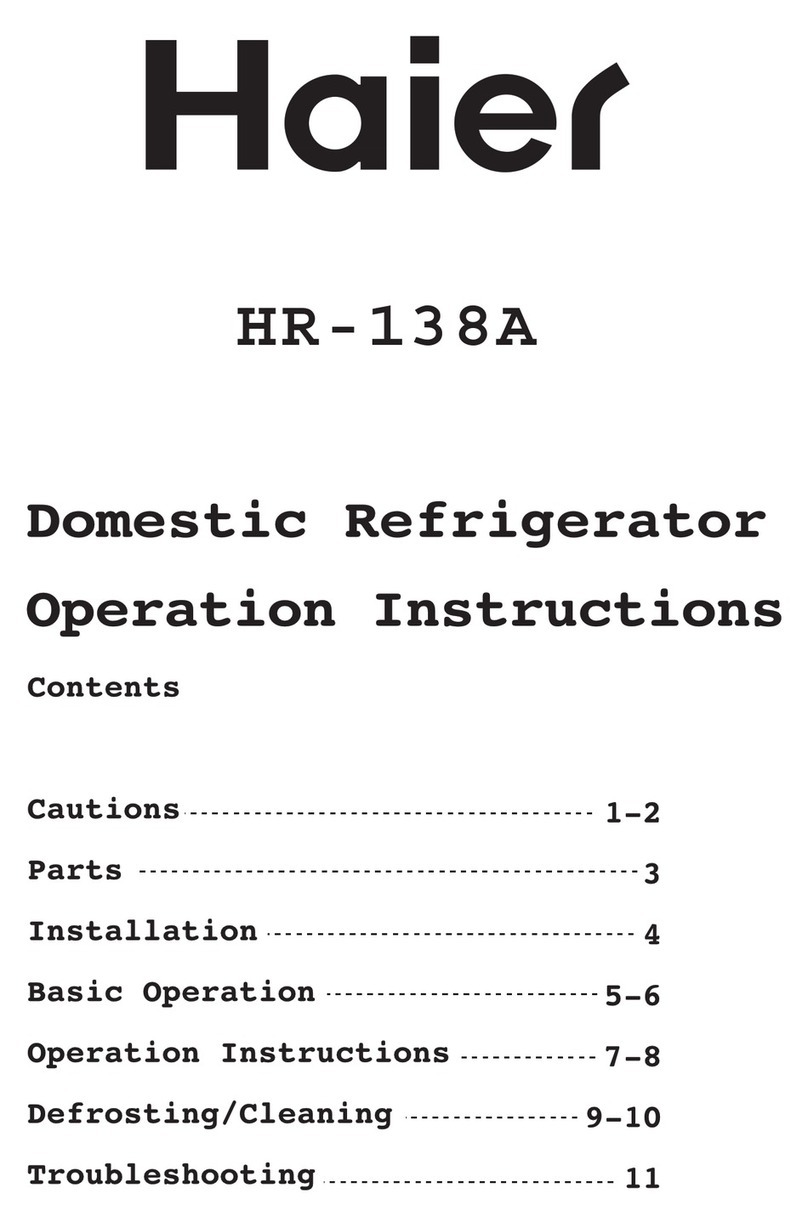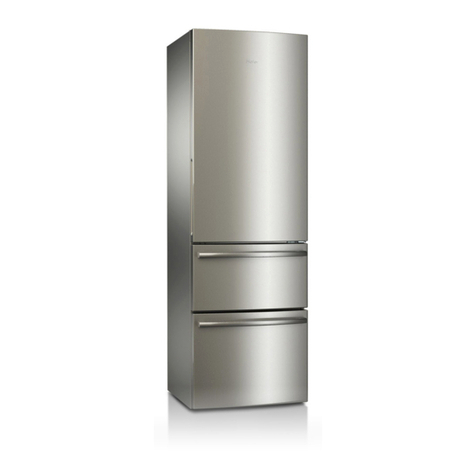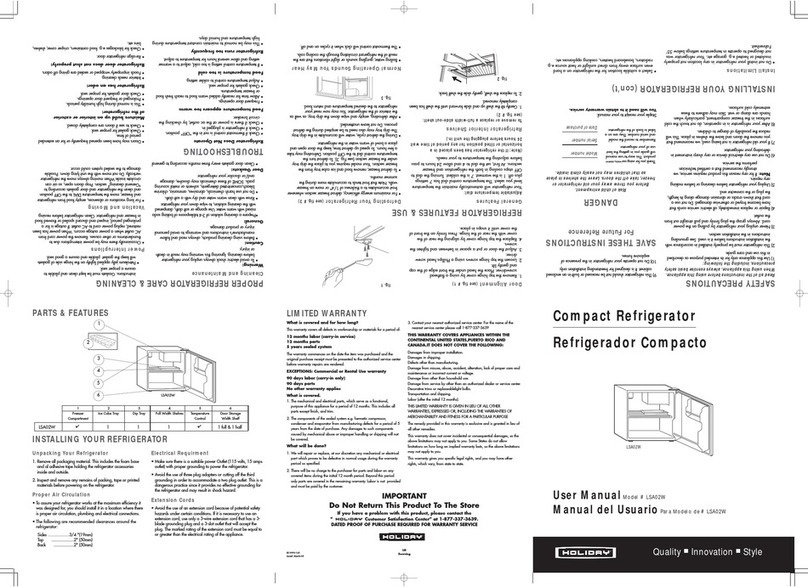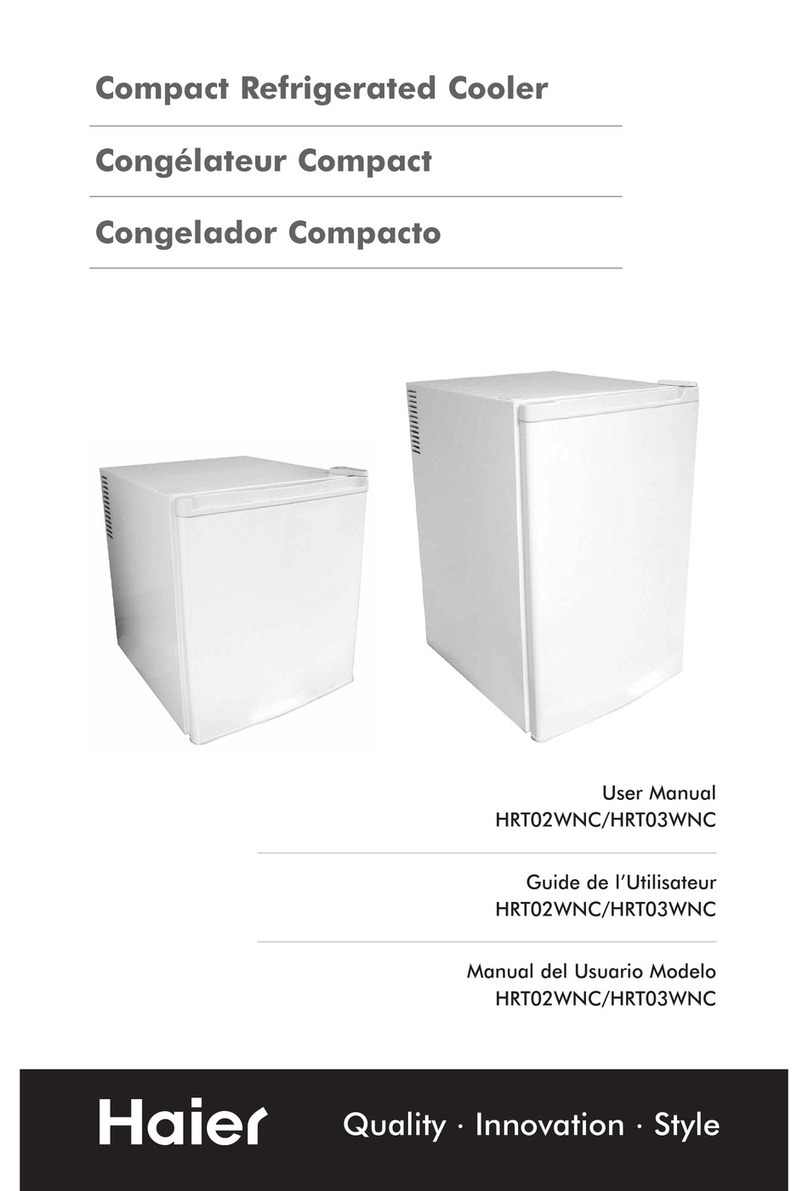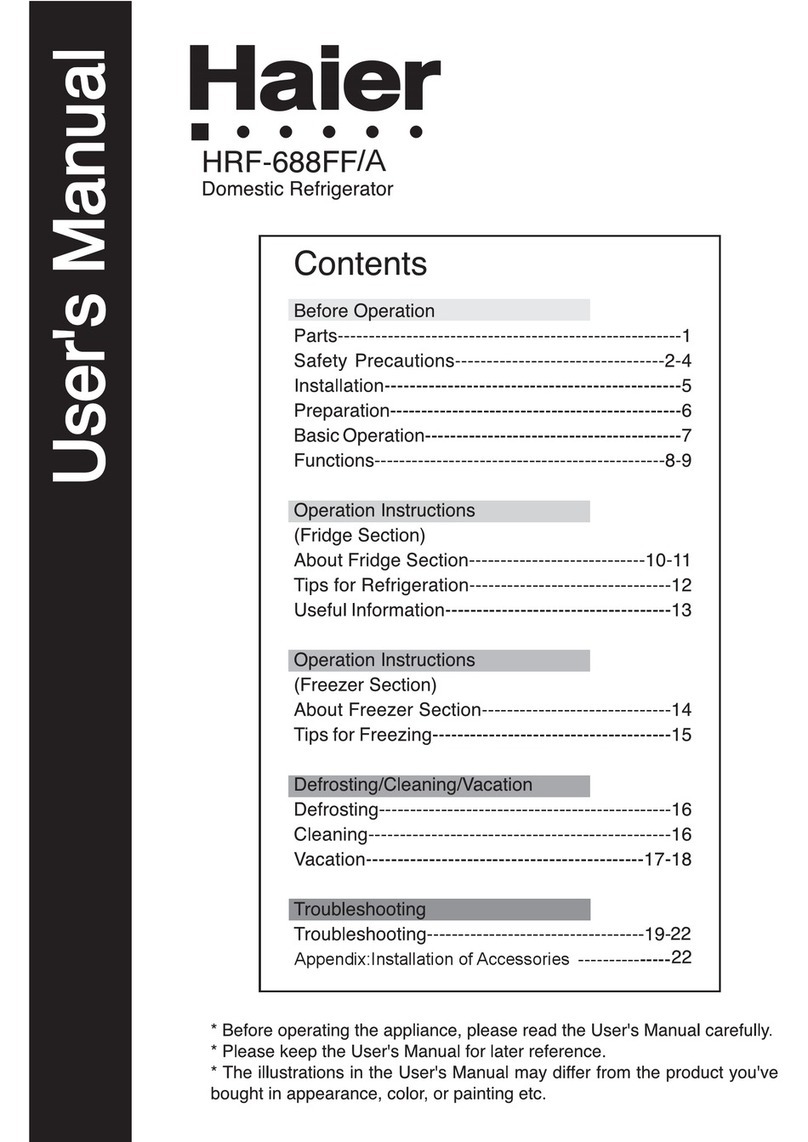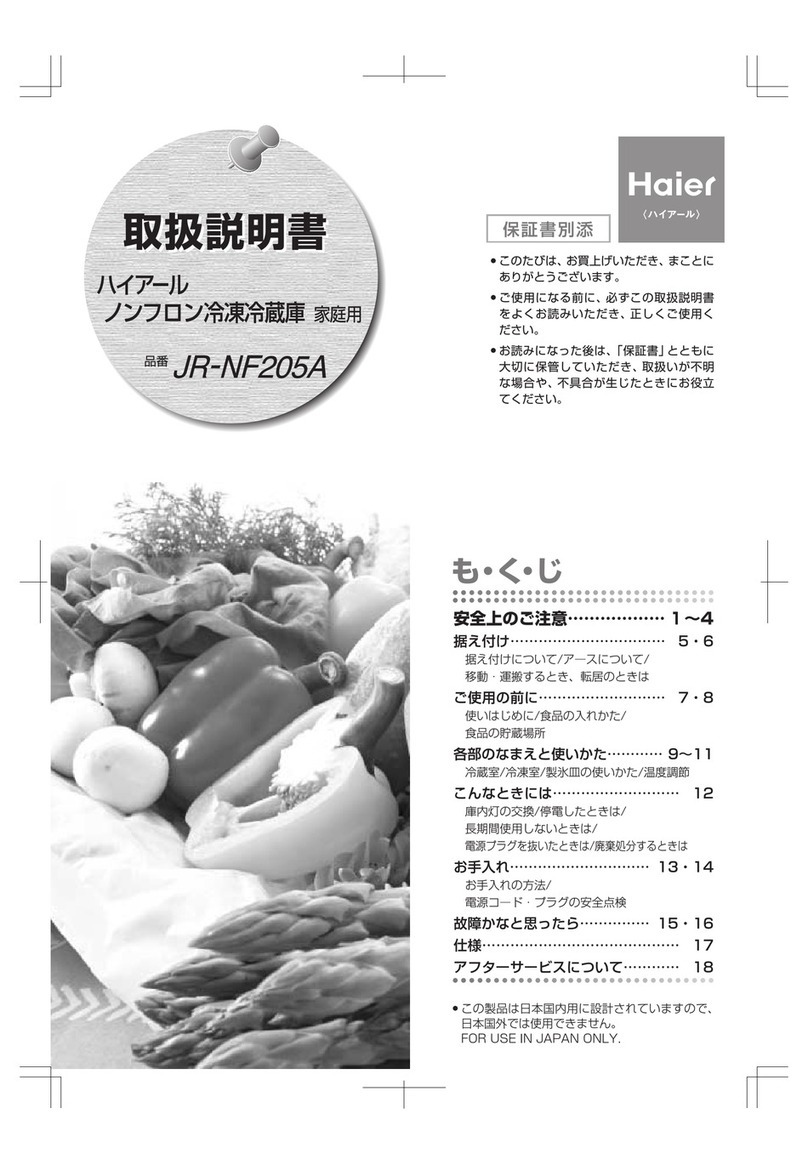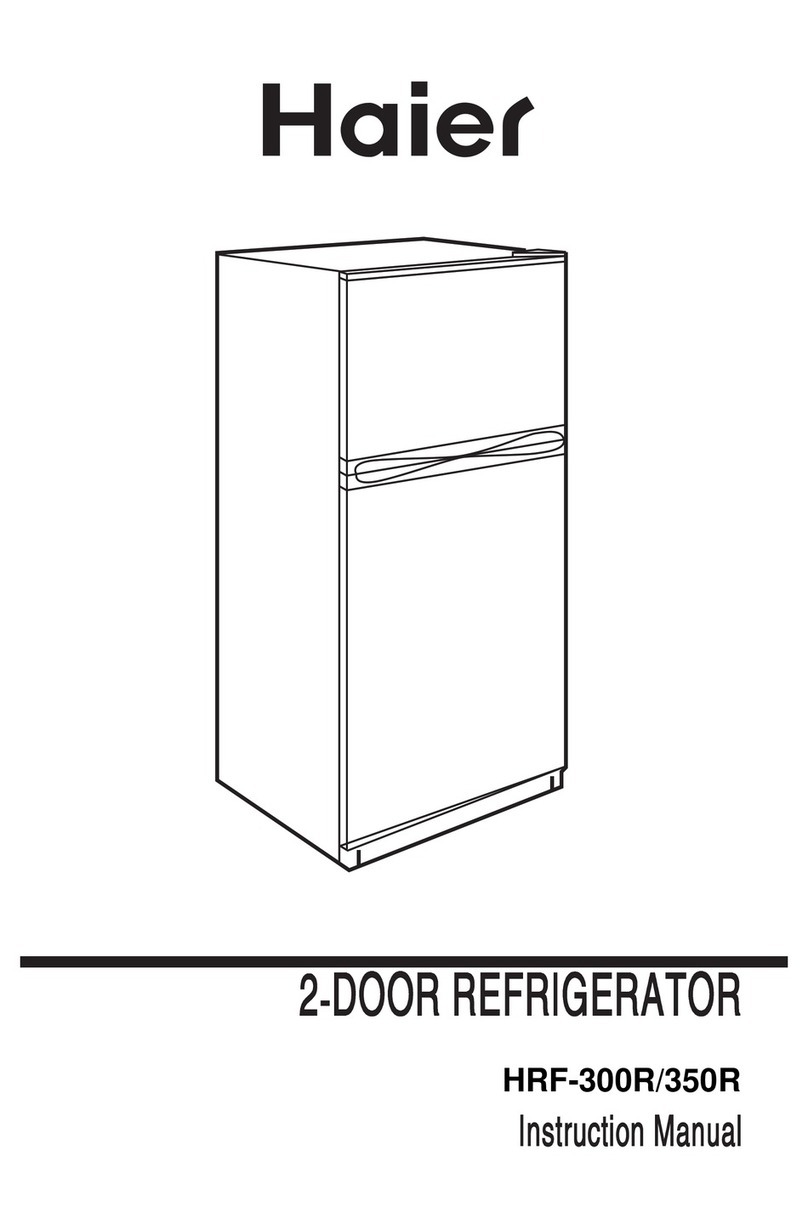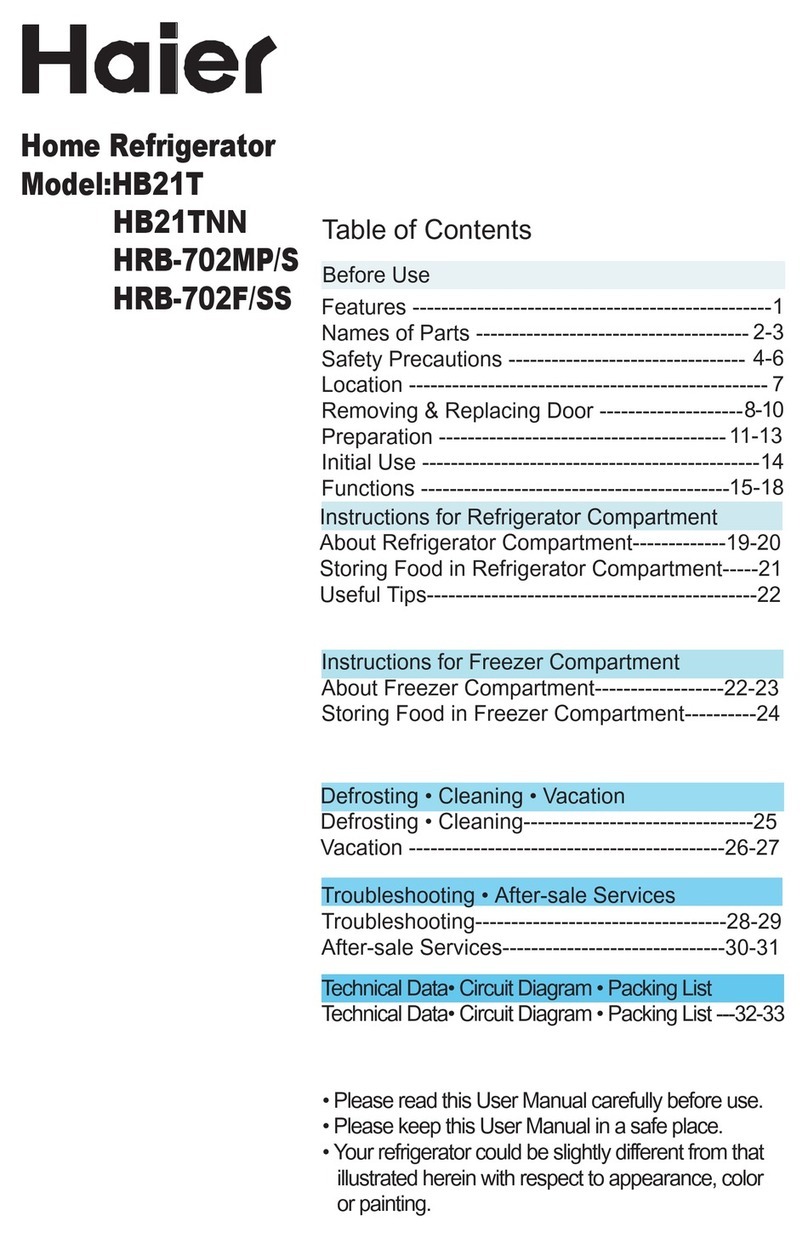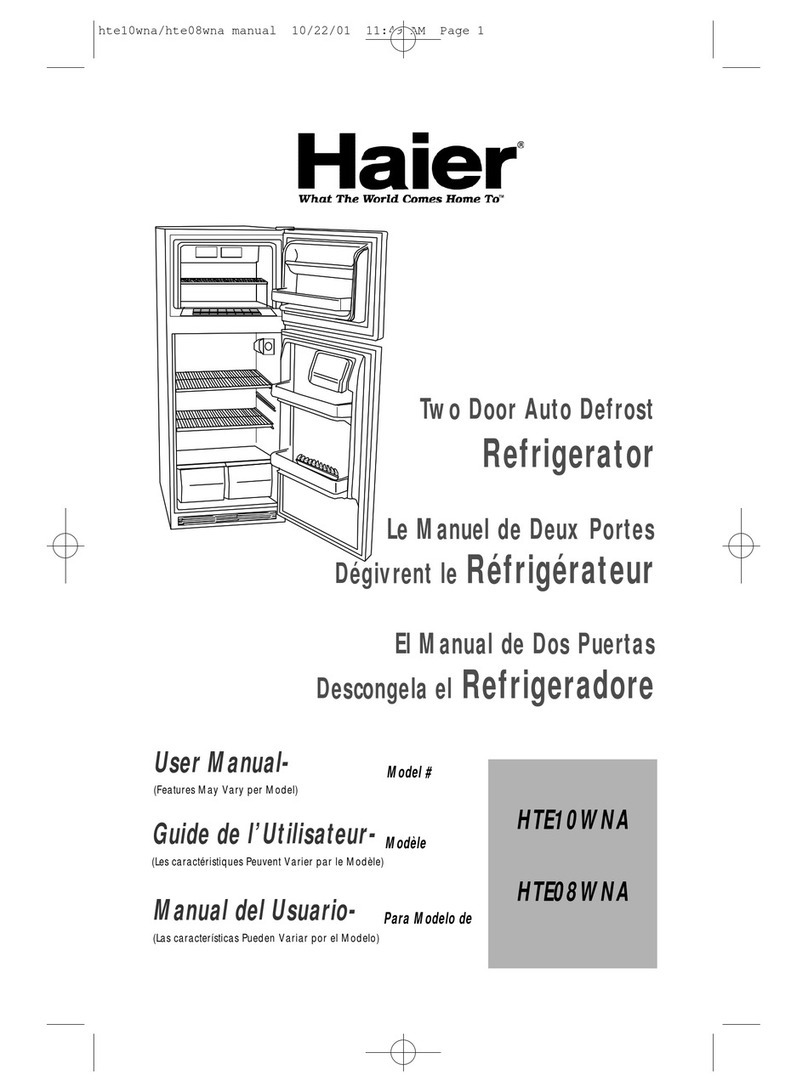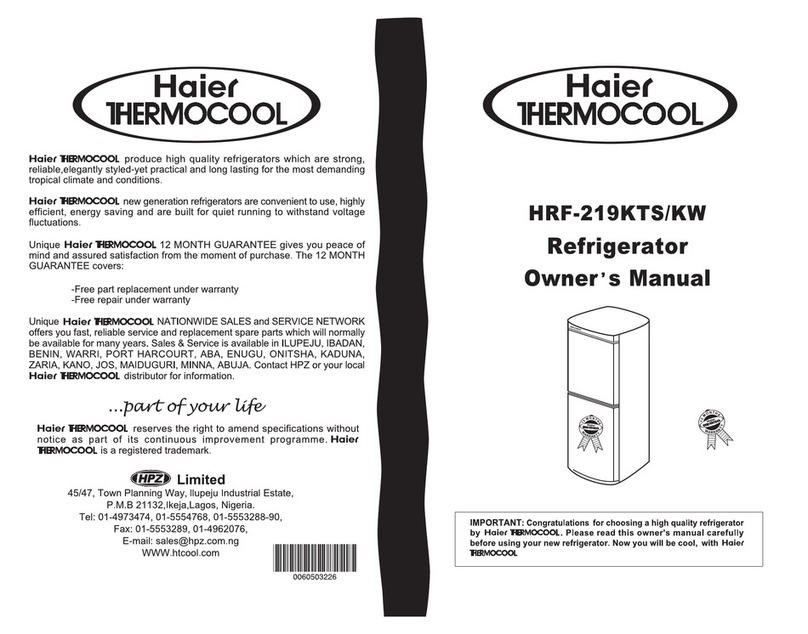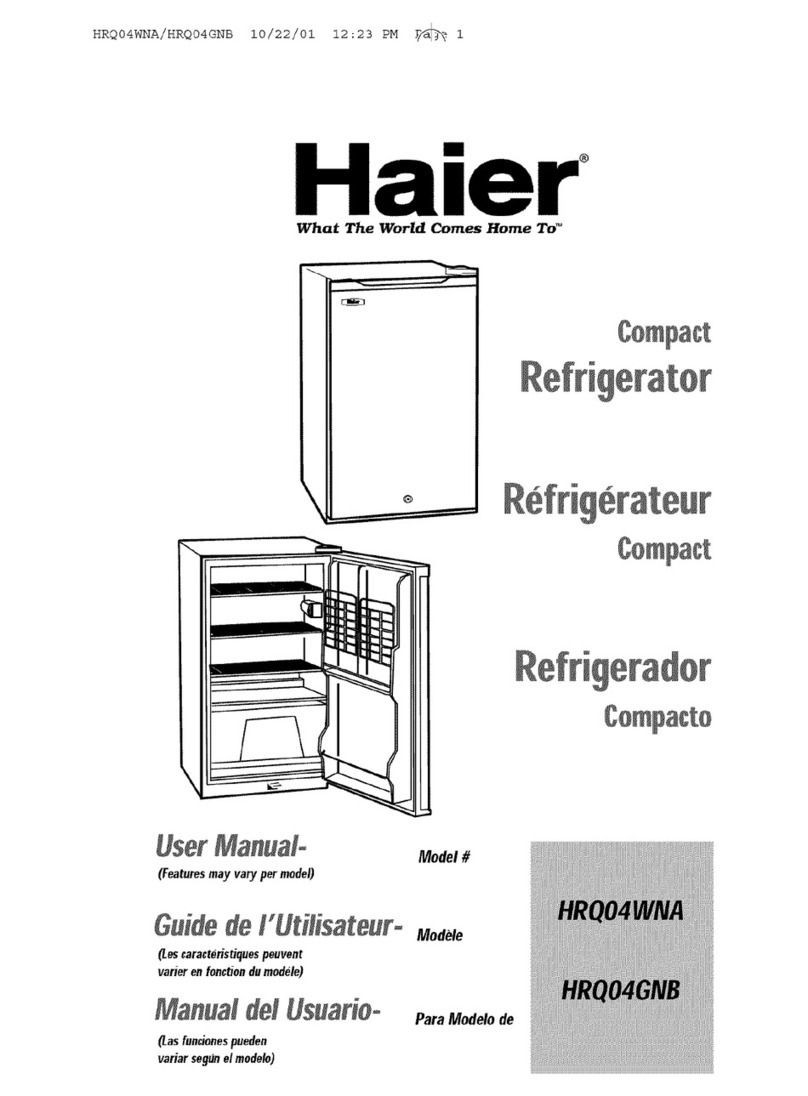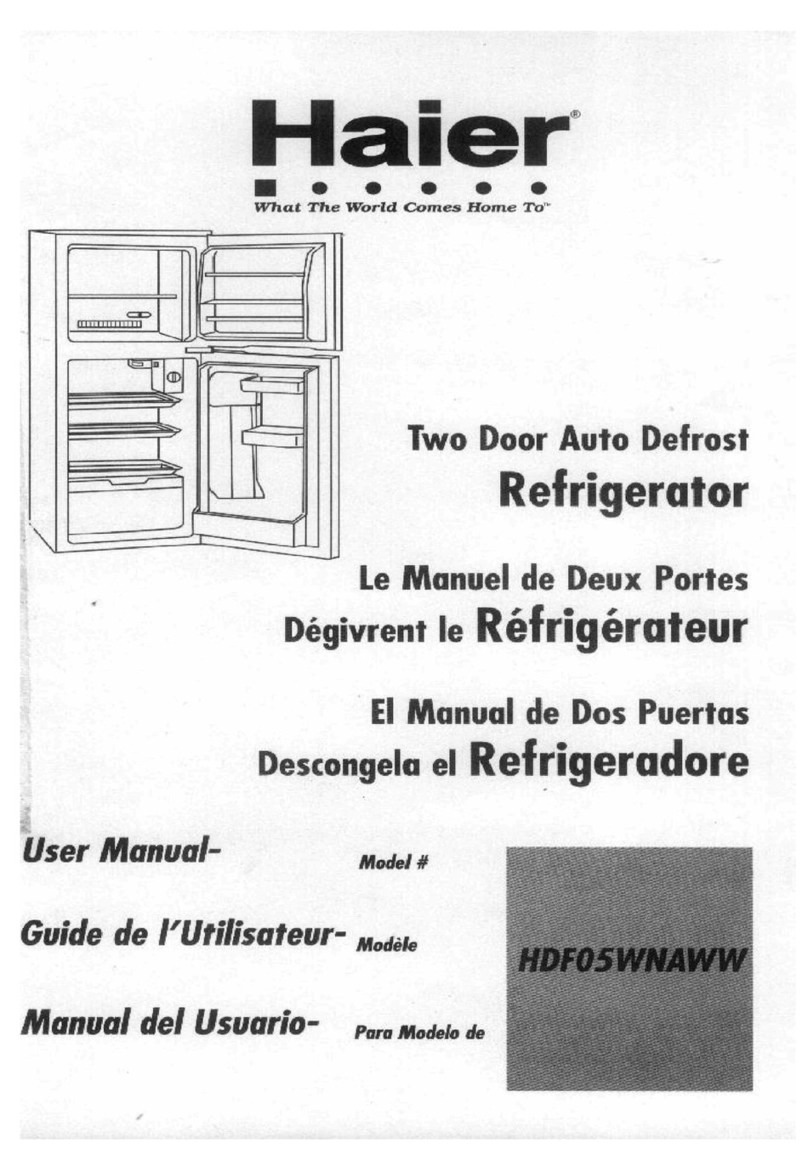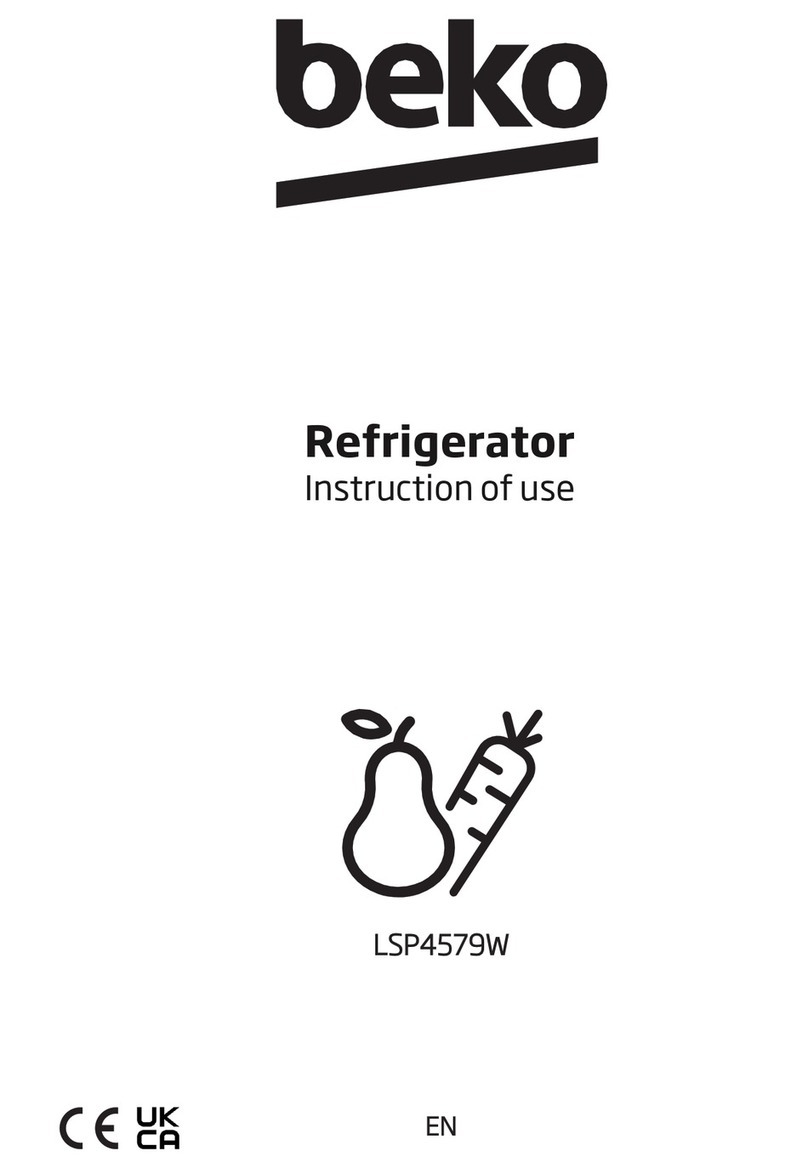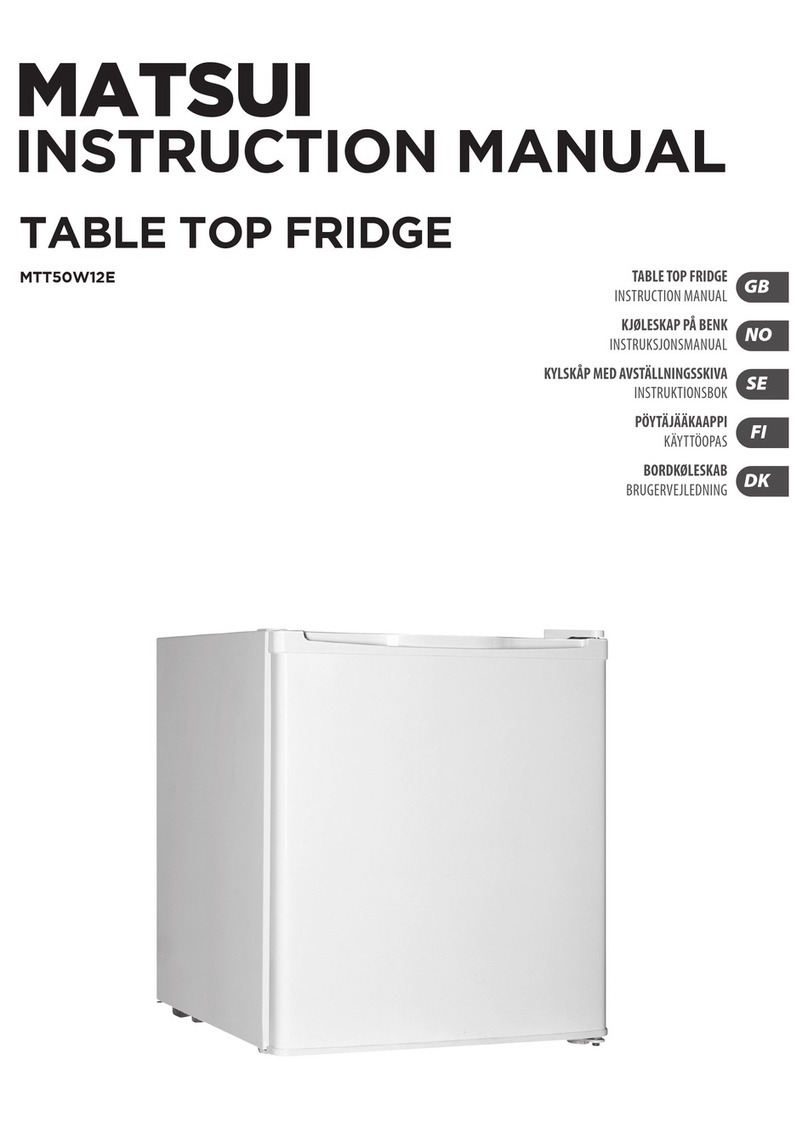
ENGLISH
WARNING
READ ALL INSTRUCTIONS BEFORE USING THIS APPLIANCE.
WHEN USING THIS APPLIANCE, ALWAYS EXERCISE BASIC SAFETY
PRECAUTIONS, INCLUDING THE FOLLOWING:
1. Use this appliance only for its intended purpose as described in this use and care manual.
2. This refrigerator must be properly installed in accordance with the installation instructions before it is
used. See Electrical Requirements in the Set Up & Use section.
3. This refrigerator should not be recessed or built-in an enclosed cabinet. It is designed for
freestanding installation only.
4. Never unplug your refrigerator by pulling on the power cord. Always grasp the plug firmly and pull
straight out from the outlet.
5. Repair or replace immediately all electric service cords that have become frayed or otherwise
damaged. Do not use a cord that shows cracks or abrasion damage along its length, at the plug or at
the connector end.
6. Do not touch cold surfaces in the freezer compartment, particularly when your hands are damp or
wet. Skin may adhere to these extremely cold surfaces.
7. Do not use any electrical device or any sharp instrument in defrosting your refrigerator.
8. Unplug your refrigerator before cleaning or making any repairs.
NOTE: If for any reason this product requires service, we strongly recommend that a qualified technician
perform service.
9. Do not operate your refrigerator in the presence of explosive fumes.
PAGE 3 ●SAFETY INFORMATION
RISK OF CHILD ENTRAPMENT. BEFORE YOU THROW
AWAY YOUR OLD REFRIGERATOR OR FREEZER, TAKE
OFF THE DOORS. LEAVE THE SHELVES IN PLACE SO
THAT CHILDREN MAY NOT EASILY CLIMB INSIDE.
WARNING
IMPORTANT SAFETY INSTRUCTIONS
Your safety and the safety of others is very important.
We have placed important safety messages throughout this manual. Always read and obey these safety
messages.
Safety messages are indicated by the safety symbol: This symbol will be accompanied by one of
the following safety indication terms and an explanation of the potential hazards that could cause death
or injury.
Safety Indication Terms Definitions:
You could be killed or seriously injured if you don’t immediately follow
instructions.
A potentially hazardous situation which, if not avoided, could result in death
or serious bodily injury
A potential hazardous situation which, if not avoided, may result in moderate
or minor injury.
WARNING
DANGER
CAUTION
